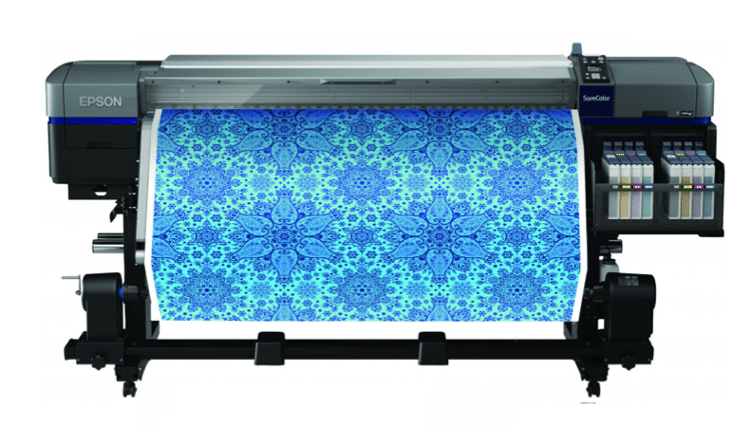Epson upgrades dye sub with F9300

Epson has launched a new dye sublimation textile printer, the 1.6m-wide SureColor SC-F9300.
Replacing the existing SC-F9200 flagship model, Epson's new SureColor SC-F9300 dye sublimation textile printer is designed primarily for fast, high-volume printing for clothing, textiles and soft signage, as well as other printed merchandise.
The printer features new Epson Precision Dot technology for dye sublimation including a halftone module, look-up tables and micro-weave, while Epson's wide gamut CMYK input profile combined with UltraChrome DS inks is intended to ensure the maximum possible colour gamut, for accurate reproduction of even the most complex designs.
Offering print speeds of up to 108m²/h, the SC-F9300 is designed to maximise uptime and eliminates problems such as cockling and head strike with its improved take-up and other reliability features.
The SureColor SC-F9300 comes with Oeko-Tex Eco Passport certification and has passed Japan's AZO test for household products, meaning that clothing and textiles produced on the printer using UltraChrome DS inks are completely safe to wear for adults and children, including babies.
"It’s a challenge to top a product that is already incredibly reliable, very fast and produces extremely high quality prints," commented Epson UK sales manager professional printing solutions Phil McMullin. "It’s faster, with improved handling of even very thin substrates, and all but eradicating cockling and other common feeding problems."
"Epson offers a complete solution - printer, inks, substrates, software and support - so everything is designed to work perfectly together. Combine that with straightforward setup and operation, and it's the ideal solution for print companies looking to move into dye sublimation, or those who want to update an earlier model," McMullin concluded.
The SureColor SC-F9300 will be available from October 2017.
Topics
Interested in joining our community?
Enquire today about joining your local FESPA Association or FESPA Direct
Recent news

The importance of ink for large format printers
Ink is crucial for large format inkjet printers, influencing substrate compatibility, productivity, and cost. Nessan Cleary discusses the three main types which include UV-curable ink, latex ink and eco-solvent ink. Each ink type has specific strengths and weaknesses, making printers choice dependent on budget and intended applications.

What are the benefits of Direct-To-Fabric printing?
Direct-to-fabric printing is gaining popularity for high-volume textile production, enabling on-demand, customized short runs. These printers offer ink flexibility, accommodating various fabric types like cotton and silk, though ink development focuses on faster turnaround by reducing pre- and post-processing. Compared to traditional methods, direct-to-fabric inkjet printing is a more sustainable option due to reduced water and chemical usage, and localized production.

What are the opportunities for large format providers regarding digital touch screens?
Digital touchscreens are becoming increasingly common, offering businesses opportunities to improve customer engagement and streamline operations. Nessan Cleary shares, while more expensive to implement than standard digital displays due to complex software and integration needs, touchscreens provide self-service options, multilingual support, and can reduce staffing costs in various settings like retail, transportation, and healthcare.
